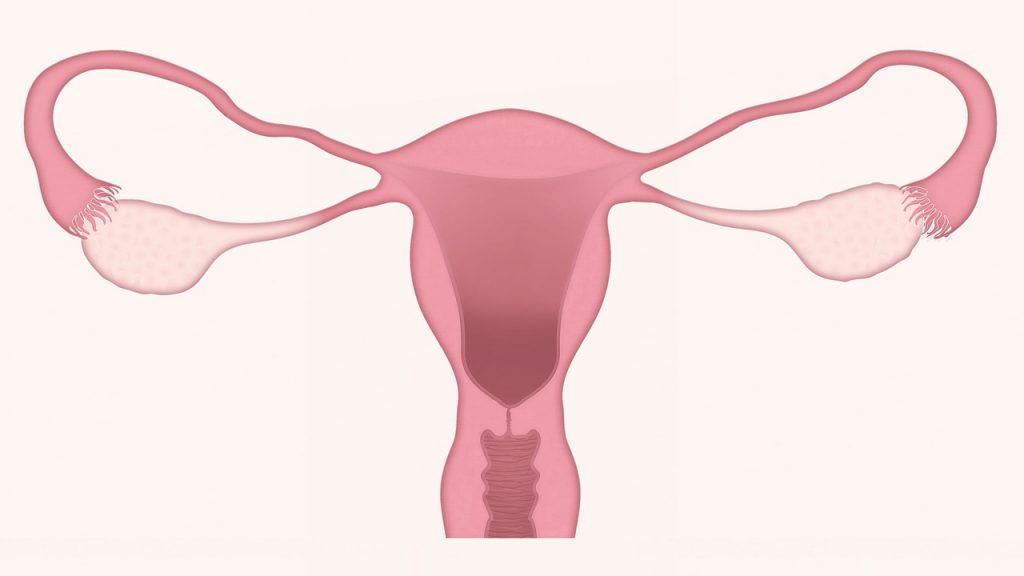Highlights
- •5 independent endometrial cancer risk factors detected via multivariable analysis
- •3 potentially novel endometrial cancer risk loci revealed by multi-trait GWAS
- •Validation of novel 7q22.1 risk locus in an endometrial cancer GWAS replication set
- •GWAS variants at 7q22.1 linked to CYP3A7 expression and female testosterone levels
Summary
To detect novel endometrial cancer risk variants, we leveraged information from endometrial cancer risk factors in a multi-trait GWAS analysis. We first assessed causal relationships between established and suspected endometrial cancer risk factors, and endometrial cancer using Mendelian randomization. Following multivariable analysis, five independent risk factors (waist circumference, testosterone levels, sex hormone binding globulin levels, age at menarche, and age at natural menopause) were included in a multi-trait Bayesian GWAS analysis. We identified three potentially novel loci that associate with endometrial cancer risk, one of which (7q22.1) replicated in an independent endometrial cancer GWAS dataset and was genome-wide significant in a meta-analysis. This locus may affect endometrial cancer risk through altered testosterone levels. Consistent with this, we observed colocalization between the signals for endometrial cancer risk and expression of CYP3A7, a gene involved in testosterone metabolism. Thus, our findings suggest opportunities for hormone therapy to prevent or treat endometrial cancer.
Introduction
Endometrial cancer is the fifth most common female cancer worldwide and the most common gynecological tumor in industrialized countries, accounting for over 380,000 new cases and nearly 90,000 deaths in 2018.
In addition, its prevalence and mortality rate are increasing in both high- and low-income countries.
,
,
Identification of genetic susceptibility loci lays a foundation for the understanding of cancer etiology. Using case-control genome-wide association study (GWAS) data from multiple studies in the Endometrial Cancer Association Consortium (ECAC), we have identified 16 loci significantly associated with endometrial cancer risk.
,
,
Together, these risk loci are estimated to explain approximately a quarter of the familial relative risk attributable to common, readily imputable variants,
indicating a large proportion of common endometrial cancer risk variants are still unidentified.
Endometrial cancer risk is likely influenced by many factors.
,
A literature review of epidemiological evidence classified reported risk factors with strong, suggestive, and weak evidence of association with endometrial cancer.
A series of Mendelian randomization studies, which use trait-associated genetic variants to infer causal relationships, have confirmed known, and identified new, endometrial cancer risk factors.
These include increased body mass index (BMI),
,
,
early onset menarche,
,
low sex hormone binding globulin (SHBG), high testosterone,
increased serum estradiol,
increased fasting insulin,
and decreased low- (LDL) and increased high-density lipoprotein (HDL) cholesterol.
A recently developed multi-trait GWAS approach, the Bayesian GWAS (bGWAS) method,
uses priors derived from Mendelian randomization analyses of risk factors in a Bayesian framework to identify genetic variants associated with a trait of interest. This approach not only offers an opportunity to identify novel genetic loci associated with a trait, but also highlights risk factors that may mediate their effects through specific loci.
In this study, we used GWAS summary-level data to confirm known and suspected risk factors for endometrial cancer via genetic correlation and Mendelian randomization analyses. We implemented bGWAS to identify new endometrial cancer risk loci and to explore which risk factors may mediate the effects of these loci. Additionally, we conducted subtype analysis to investigate associations with the two primary histological classifications of endometrial cancer: endometrioid and non-endometrioid. Novel loci were assessed for replication in independent endometrial cancer GWAS datasets and functional interpretation provided to elucidate the underlying genetic mechanisms.
Results
Assessment of endometrial cancer risk factors
A total of 34 known and potential risk factors were assessed for association with endometrial cancer, 19 implicated by epidemiological studies and 21 from prior Mendelian randomization publications (Table S1). We firstly assessed the degree of shared genetic architecture between each factor and endometrial cancer risk for all histologies using genetic correlation and found 19 factors that were at least nominally correlated (p < 0.05), with broadly similar results for endometrioid endometrial cancer (Table 1). However, due to the relatively small sample size and the absence of significant heritability, we could not perform correlation analysis for non-endometrioid endometrial cancer. The most significantly correlated factors included obesity-related anthropometric traits such as BMI, weight, waist circumference, and arm fat ratio (Table 1). Our inverse variance weighted (IVW) Mendelian randomization analysis findings were generally supported by the genetic correlation results, particularly for the most significantly correlated factors (Table 1). Furthermore, the IVW results were consistent with the previous Mendelian randomization analyses (Table S1) and additionally provided causal evidence for epidemiological risk factors such as waist circumference, parity and type 1 diabetes (Table 1). As bGWAS uses the IVW method to estimate causal associations, only traits that showed significant causal associations with endometrial cancer risk using this method were included in bGWAS analysis. Using an IVW p value threshold of p < 0.05, 18 risk factors for all endometrial cancer histologies, 16 risk factors for endometrioid endometrial cancer histology and 6 risk factors for non-endometrioid endometrial cancer histologies were considered for inclusion in the bGWAS analysis (Tables 1 and S2)…







